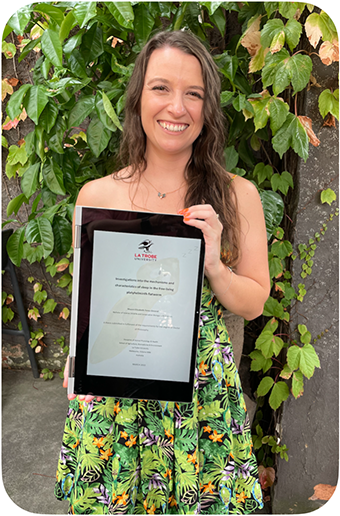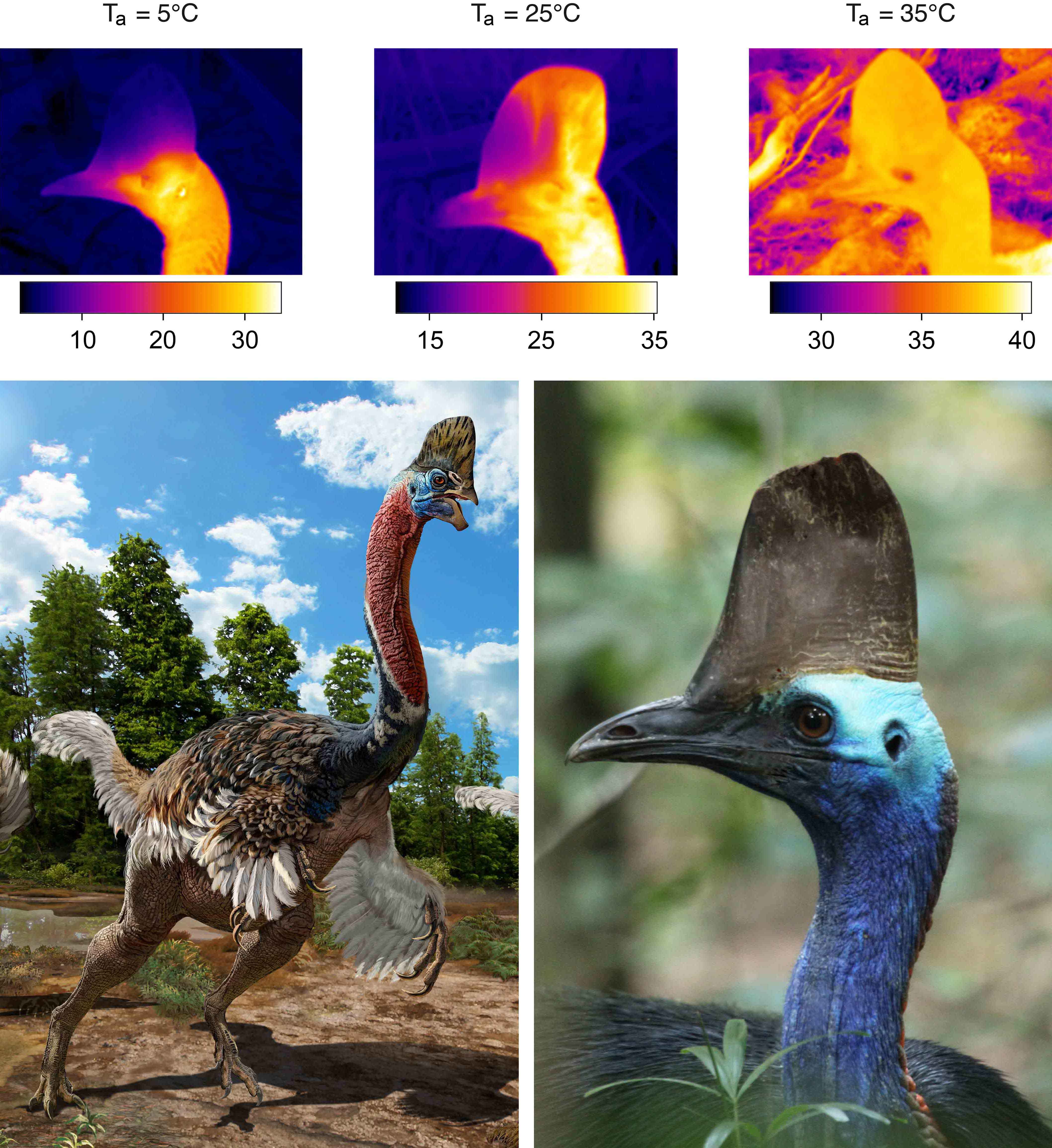Dear Sleep Friends,
We are (over)due for a Year-end Re-cap on the successes of the Group in 2023 with a hint of what’s-to-come in 2024. I realise the temptation is strong to scroll this long post, searching for gems. Resist! Gems abound, and there is much to learn in this exercise of excellence on display. And so, in order of scholastic seniority, let me please bring your focus towards…
Doctor Shauni Omond. Dr Omond had her PhD conferred at a university ceremony on December 13th. It was there Shauni gave a stirring address to the other 36 newly-minted doctors and received the Nancy Millis Medal for a dissertation of outstanding quality and contribution. Additionally in 2023, Shauni published a paper in the Journal of Biological Rhythms and showed that losing your head does not mean losing circadian rhythmicity*. She also contributed a paper to the Journal of Comparative Physiology B on the value of flatworms as an emerging model for sleep research (viewed more than 2,600 times). In October, Shauni travelled to the Gold Coast to attend Sleep DownUnder. There she delivered poster and oral presentations. Next year will see Shauni publish the final paper of her PhD on the effect of neurotransmitters on flatworm metabolism. She will also continue work with A/Prof Matt Driller on environmental consequences on human sleep and performance in Olympic athletes. No doubt Shauni will continue her steep ascending trajectory and secure a postdoc of her choosing. Congratulations, Dr Omond!
(*in flatworms)
Erika Zaid submitted her PhD for peer-review on November 30th! Erika started with us in 2016 and accomplished much in that time. Two intense field seasons studying the behaviour and physiology of breeding antechinus in para-wild and eu-wild environments, followed by marriage, Baby Louie, (Big Fred), and tireless (and tireful) rearing. Importantly, days ago, Erika had accepted the second first-author paper of her dissertation. This paper, in press at Current Biology, uses [under embargo] to show that these [redacted]. This sustained level of [redacted]. Amazing! Erika is now working on two other papers which should see daylight in 2024. In addition to these large successes, Baby Louie is now fluent in English and Italian and we’ll count his successes as hers. Congratulations, soon-to-be Dr Zaid!
Vincent Knowles. A dark horse in the lab as he is based with Prof Raoul Mulder at The University of Melbourne and co-supervised by Dr Aulsebrook in Germany. Still, Vincent had a year worthy of the spotlight. Vincent has been using cool tech to look at behaviour and spatial ecology of wild black swans, mostly in Albert Park Lake. Vincent was interested in using accelerometers and GPS to determine the time budgets of wild swans, continuously for months. He could train an algorithm to extract specific behaviours from accelerometer squiggles, such as preening, resting and foraging. In doing so, Vincent presented two chapters: (1) he showed that pair-bonded swans show great variation in how (physically) close they are to one another, across days and a year and (2) that newly-wed swans do not get closer to one another than swans enjoying their golden years together. They don’t coordinate activity or specific activities. He also provided the first quantification that non-breeding males, which are arrhythmic, become nocturnal with the appearance of the egg and day-time incubation duties. Conversely, females become diurnal and incubate at night. For his efforts of long-hours over months spent intensively monitoring wild swans, together with a stellar thesis, Vincent earned a high grade on his MSc and has secured a PhD scholarship at The University of Melbourne. In 2024, Vincent will work on Phillip Island working with Cape Barren geese. Beautiful, yet enigmatic and phylogenetically unique, Cape Barren geese are over-abundant on the Island and causing tension with locals, notably farmers. Vincent will soothe the tension by providing data on basic natural history and spatial ecology of geese. Great work, Vincent!
Sophia Lee. Sophia joined us from California at the beginning of this year. Following her trans-hemispheric relocation, she moved to Geelong for her Honours work on fiddler rays housed at the Queenscliff Marine Research Station. Working largely independently, Sophia provided evidence that restful rays are less responsive to tactile stimulation than recently active rays. By itself, this observation suggested that rays sleep not unlike other animals. However, two sleep deprivation studies did not reveal evidence for sleep homeostasis. This either suggests that sleep is regulated differently in rays or, perhaps more likely, that our assumption that inactive rays are always asleep is unlikely to hold. Thus, rays and other cryptic animals might challenge the behavioural characterization of sleep used since the days of Henri Piéron (1913). Nicely done, Sophia!
Hannah Elmes. I’ve known Hannah since first-year Ecology, Evolution & Biodiversity (BIO1EEB), through second-year Animal Physiology (ZOO2AP), and the Heron Island first course (ZOO3HIF). Hannah is impressive. Curious and careful. Organized and engaged. In 2023, Hannah completed her BSc. After regularly getting amongst the highest grades in each subject, Hannah finishes her degree with a WAM above 90%. This remarkable achievement is punctuated by her first publication in the Journal of Thermal Biology, in which Hannah quantified thermal profiles of sunning birds. Fortunately for us, and hopefully for her, Hannah will continue with the group in 2024 as an Honours student working with histological analyses of young and aged pigeon brains, supervised by A/Profs Richard Peters and Matt Hale (La Trobe University), Prof Tim Roth and Dr Robin Johnsson (USA). Well done, Hannah on your sustained successes and Best wishes for more!
Poppy Veillet. Like Hannah, I’ve known, taught, and worked with Poppy for three years. Like Hannah, Poppy was a stand-out student from first year biology and someone everyone would want to work with. Keen. Passionate. Dedicated. Resilient. She worked in the lab, with intermittent pay, and more often volunteered time to collect data on the cognitive performance of wild Australian magpies. While Poppy earned her BSc this year, she also saw publication of her first paper. In Behavioural Ecology and Sociobiology, working alongside Dr Robin Johnsson, they showed that wild magpies can be taught to pull an intact string to obtain a food reward, but can also discern this intact (functional) string from a cut (non-functional) string. Whether this is a case of relatively simple associative learning or complex causal reasoning is unclear, but magpies seem to be capable of greater mental feats than previously recognized. Next year, Poppy and her partner, Jesse, depart Australian shores for the United States, South America, then Canada. After this, Poppy plans for a MSc leaving little doubt of future success.
And now news from the Somnophilic Alumni!
Dr Annie Aulsebrook flew to Germany to take up her Marie Curie Fellowship during early COVID days of 2020. During some of that time, I had the honour of being her field tech (2022) and psychology patient (2023) with work on pectoral sandpipers in Barrow, Alaska. She also had a paper recently published in Animal Behaviour (Aulsebrook AE, Jacques-Hamilton R, Kempenaers B. Quantifying mating behaviour using accelerometry and machine learning: challenges and opportunities). In February 2024, she blessedly returns to take up an Alfred Deakin Postdoctoral Fellowship based at Deakin University in Geelong to work with Prof Kate Buchanan. Congratulations, Annie, on this second postdoc and, more importantly, returning home.
Drs Robin Johnsson and Farley Connelly, both located in the United States, albeit on opposite coasts, have continued to work together. Either because of mutual respect and admiration or blackmail, their string of successes continued unbated. In the January issue of Current Biology, you will soon see a Quick Guide on Australian magpies featuring much of their research over the last four years. Next year will see Robin securing a second postdoc in either the UK or (hopefully) back in Australia, and Farley should have a great year with two more pubs: one on the increasingly well-studied Australian magpie and the other on…. pigeons! Indeed, Farley, Robin, and Hannah are the latest members to join the Pigeon Train – the researchers that have discovered the advantages, nay the love, for pigeons. Welcome Aboard. Choo choo!
That’s it for the re-cap, my friends. I look forward to seeing more successes as this year unfolds.




You must be logged in to post a comment.